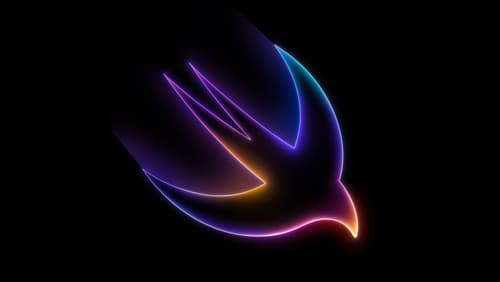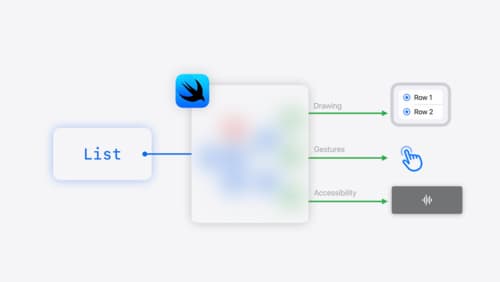How to use UITableView in SwiftUI
Asked on 2024-07-30
1 search
To use UITableView in SwiftUI, you can leverage the List view, which is a powerful and flexible way to create table-like interfaces in SwiftUI. Here are some key points and examples from the WWDC sessions that can help you get started:
-
Basic List Usage:
- You can use
Listto create a table-like view. It can be initialized with a collection of data, and it will generate views for each element in the collection. - Example from the session "SwiftUI essentials":
SwiftUI essentials (07:55)struct Pet: Identifiable { let id = UUID() let name: String } let pets = [Pet(name: "Whiskers"), Pet(name: "Rufus"), Pet(name: "Bubbles")] struct ContentView: View { var body: some View { List(pets) { pet in Text(pet.name) } } }
- You can use
-
Customizing List Rows:
- You can customize each row in the list by using custom views.
- Example from the session "SwiftUI essentials":
SwiftUI essentials (08:50)struct PetRow: View { var pet: Pet var body: some View { HStack { Text(pet.name) Spacer() Button("Award") { // Action for awarding the pet } } } } struct ContentView: View { var body: some View { List(pets) { pet in PetRow(pet: pet) } } }
-
Advanced List Customization:
- You can add features like swipe actions to each row.
- Example from the session "SwiftUI essentials":
SwiftUI essentials (08:50)struct ContentView: View { var body: some View { List(pets) { pet in Text(pet.name) .swipeActions { Button("Award") { // Action for awarding the pet } .tint(.green) } } } }
-
Using Sections in Lists:
- You can organize data into sections within a list.
- Example from the session "Demystify SwiftUI containers":
Demystify SwiftUI containers (10:42)struct ContentView: View { var body: some View { List { Section(header: Text("My Pets")) { ForEach(myPets) { pet in Text(pet.name) } } Section(header: Text("Other Pets")) { ForEach(otherPets) { pet in Text(pet.name) } } } } }
By using List and its various customization options, you can effectively create and manage table views in SwiftUI, similar to UITableView in UIKit. For more detailed examples and advanced techniques, you can refer to the sessions mentioned above.

Platforms State of the Union
Discover the newest advancements on Apple platforms.

SwiftUI essentials
Join us on a tour of SwiftUI, Apple’s declarative user interface framework. Learn essential concepts for building apps in SwiftUI, like views, state variables, and layout. Discover the breadth of APIs for building fully featured experiences and crafting unique custom components. Whether you’re brand new to SwiftUI or an experienced developer, you’ll learn how to take advantage of what SwiftUI has to offer when building great apps.

Demystify SwiftUI containers
Learn about the capabilities of SwiftUI container views and build a mental model for how subviews are managed by their containers. Leverage new APIs to build your own custom containers, create modifiers to customize container content, and give your containers that extra polish that helps your apps stand out.
